Ina Garten's 15 Best Baking Tips
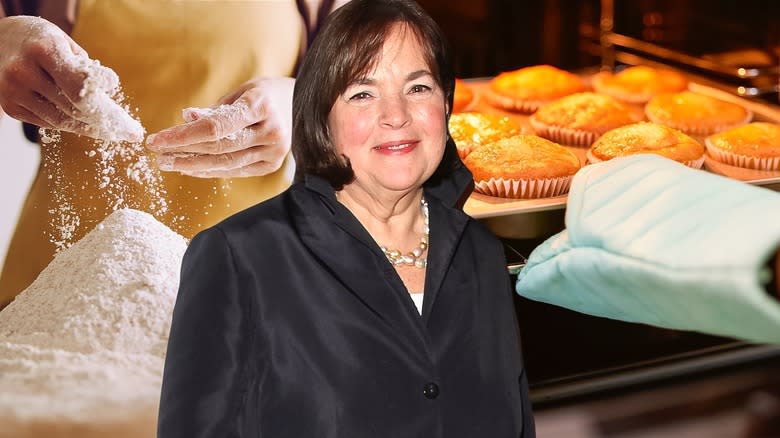
Ina Garten may be the Barefoot Contessa, but when it comes to dinner parties, she's a full-on queen of the kitchen (and dining room). But not just anyone can be kitchen royalty. You have to know how to plan an evening of entertaining from start to finish, from the welcome cocktails down to the last forkful of dessert. Ina Garten knows this well, which is why she has perfected not only her savory cooking skills but her high-class baking abilities as well.
A lot has been said about Ina Garten's ability to put together a delicious cocktail or her expertise in crafting the perfect roast chicken, both in flavor and presentation. But her baking abilities are just as powerful, so we wanted to look at some of the baking tricks she uses that we can all try at home. After all, not only has Ina Garten given us some amazing dessert recipes over the years, but she also executes them perfectly herself. In particular, she seems to have anticipated much of what could go wrong on a baking mission and devised steps to avoid common mishaps. Let's read through the best tips here.
Read more: 30 Types Of Cake, Explained
Soften The Butter Overnight
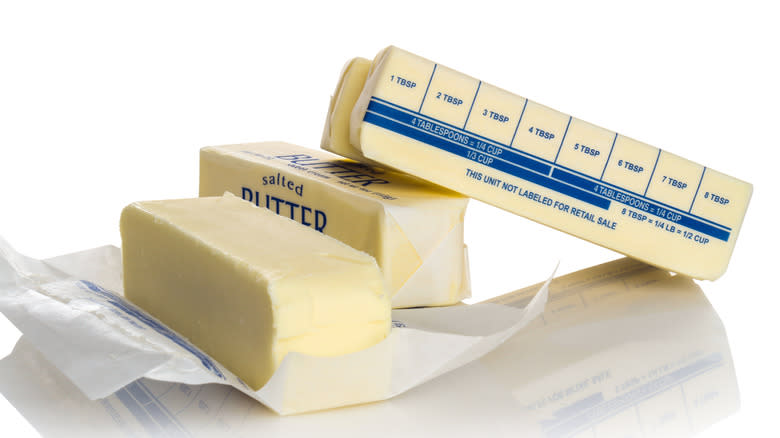
You know the feeling. You're craving cookies but don't want to go out to the store and buy them and you certainly can't handle waiting for delivery. You get the idea to check through your cupboards and see if you have the ingredients to whip up a batch of cookies yourself. Luckily, it's all there, but there's just one problem: the butter is sitting there, rock solid, in the cold, dark fridge.
This is a problem because many recipes call for butter to have reached room temperature before including it -- this makes it possible to cream it, which is a key step. To avoid waiting, then, Ina Garten takes the butter out of the fridge the night before she plans on making cookies. Of course this requires some forward planning, which has nothing to do with the spur-of-the-moment scenario described above. But if you have good butter and it's not the height of summer without air conditioning, there's nothing wrong with keeping your butter in a cool, dry place, covered in a butter dish or some such receptacle. Butter contains so much fat that it'll take a while for it to go bad. Just don't leave it there indefinitely and forget about it!
Use Melted Butter In Brownies
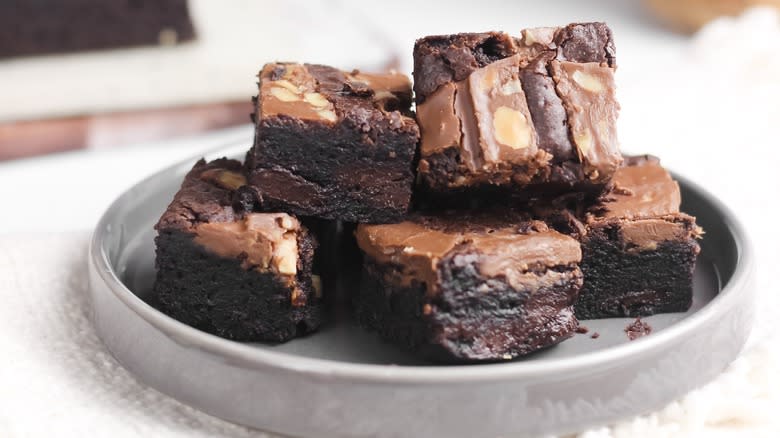
If you get a brownie craving in the middle of the night, you won't have to worry about taking your butter out of the fridge to slowly soften it to creamy perfection. That's because as Ina Garten suggests, brownies are best made with melted butter, which you can easily make from cold butter straight out of the fridge. The melted butter gives the brownies a texture that is softer on the inside, and generally more moist all around.
One great example of this phenomenon is our ultimate fudgy brownies recipe. Prepare this by melting the butter first, before letting it cool for a few minutes, as Ina Garten does. Then add brown sugar and whisk. Add the eggs, vanilla extract, cocoa powder, and flour, and cook the brownies for 35 minutes at 350 F. Remove the brownies from the oven while they're still slightly gooey in the middle -- a little extra softness never hurt anyone. (We think.)
Freeze Cookie Dough Before Baking
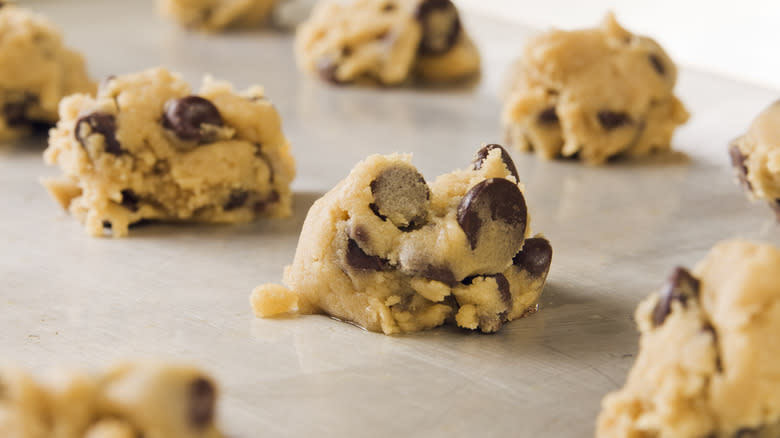
If you've ever pulled your chocolate chip cookies out of the oven only to find them singed at the edges and barely touched in the middle, you may be looking for ways to ensure a more even cooking process. Ina Garten has the prep tip for perfect cookie dough. She suggests freezing it for no more than 15 minutes before putting it in the oven. This is a great hack, especially for those who often forget to preheat the oven before starting on the dough. This way the cookies have something to do while they're waiting for that oven to be ready.
Try this simple but incredibly effective tactic on your next batch of cookies. Our brown butter chocolate chip cookie recipe is the perfect test subject. Start by melting the butter until browned and foamy, then cooling it and mixing it with brown and white sugars, then eggs and vanilla extract. Separately mix together flour, cornstarch, baking powder, and salt, and add this to the melted butter mixture along with some chocolate chips. Now, this recipe recommends refrigerating the glob of cookie dough for 2 hours before scooping out the individual cookies, but this is the perfect spot to put Ina Garten's advice to the test. Rather, scoop out the dough balls first, then freeze them for 15 minutes before putting them in the oven and baking them at 350 F for 12 minutes. It may save you some time if nothing else.
Take Your Cookies Out Of The Oven Sooner Than Required
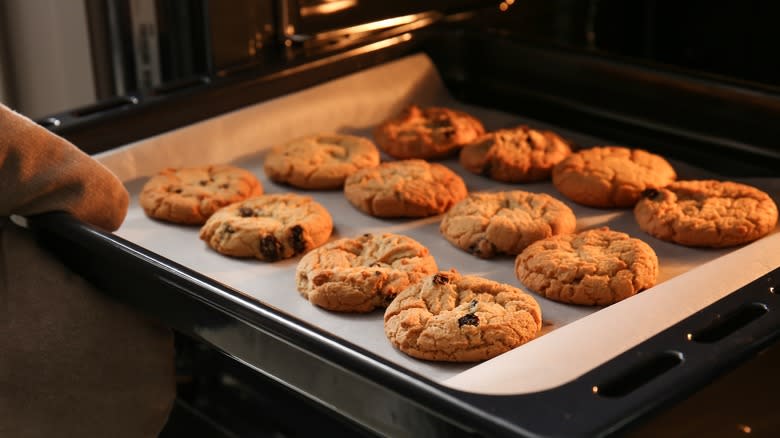
If you like your cookies overcooked or burnt, you can skip this step. But we're willing to bet you like them soft and gooey, especially in the middle. Now you might be taking those cookies out when they are soft and gooey in the middle, only to watch them become hard and brittle an hour later, after having cooled on the rack. This is because cookies, and many other foods, continue to cook slightly after being removed from the oven.
Ina Garten's essential cookie baking tip is to take the cookies out sooner than the recipe calls for. You can try this theory out on any of these 28 cookie recipes your family will love. The lemon gooey butter cookies will come out just as gooey as they were intended to be, while the classic snowball cookies won't accidentally burn on the edges, which can happen if some of the nuts are sticking out of the dough, becoming overly toasted. Finally, the last thing you want is for your honey, halva, and cardamom biscotti to be too hard to even bite into.
Stick To The Recipe's Measurements
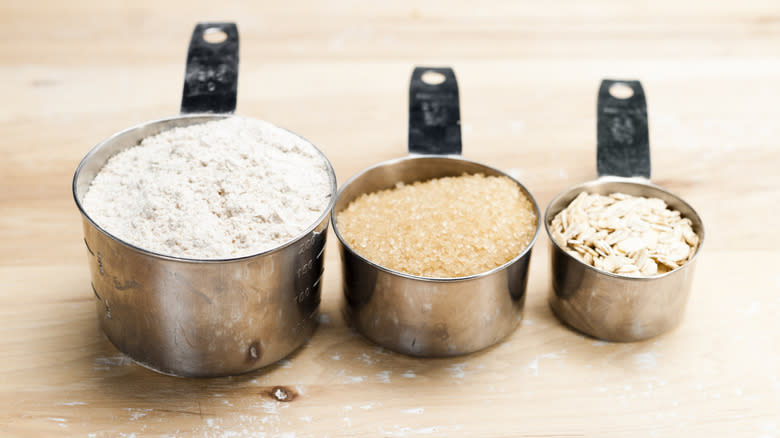
While it may be perfectly fine to play around with proportions and spices in your weekly chili, baking is an exact science, and if you get the measurements wrong, or even purposely alter them, you'll end up with a completely different product. To avoid any unpleasant surprises, Ina Garten suggests going by the book on dessert-making, and ensuring you check and double-check your measurements each time you add a new ingredient to the mix.
The best part about this advice is that it's easy to follow. All you have to do is read the recipe carefully and follow the instructions to the letter. This is not about using any skills or information you don't have. It's just about reading what's on the page and executing a recipe as described. And we'll do you one better. Don't just stick to the correct measurements. Also be sure to follow the steps in order, for example by combining dry ingredients separately from the wet ingredients before mixing everything together. Messing with this principle can change the chemistry of the baked good, yielding unexpected results.
Choose The Right Baking Equipment
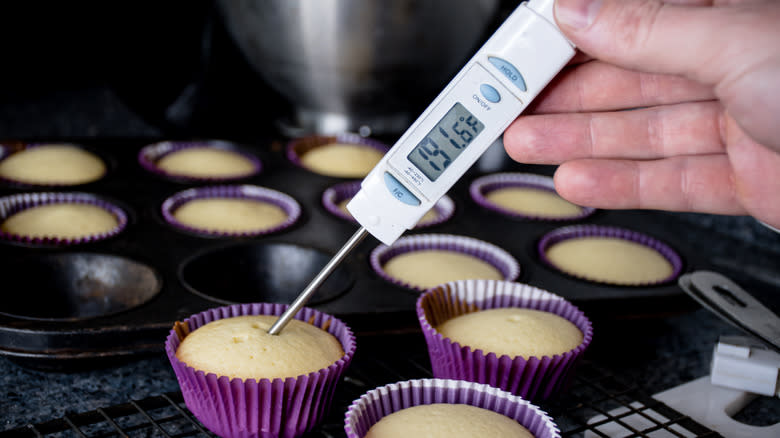
It is a bad workman who blames his tools when something goes wrong, but there's something to be said for using the right tools in order to make sure everything goes right. Ina Garten knows this too, which is why she advises dessert-makers to choose a good rolling pin, several thermometers, and a timer or two or three. Truthfully, if you could shell out on all the best baking equipment Williams Sonoma can provide, you'd be in a good place, but even Ina knows that's not necessary, which is why she focuses on those three items.
In fact, these are not random selections. A good baking dish and a cheap one won't yield a much different performance in most cases, but a faulty thermometer could torpedo your entire recipe by causing the item to be underbaked or burned to a crisp. Likewise, a timer that doesn't go off at the appropriate moment is no timer at all.
Add Homemade Vanilla Extract

In Ina Garten's world, homemade isn't always better, and in fact, she'll be the first to admit that store-bought items are perfectly fine to use in many kitchen scenarios. So when Ina Garten suggests using homemade vanilla extract in something as part of her essential cookie baking tips, you know she means business, especially because this is not a typical ingredient to make at home. Yet Ina is known for her giant vats of homemade vanilla extract.
To make this concoction yourself, try steeping vanilla pods in vodka for at least a month before using it, just to make sure the vanilla essence has been thoroughly extracted. But the fun part comes when you find out that you can keep using this vanilla for years to come, just as Ina Garten does with her 37-year-old vanilla extract. You just have to keep adding vanilla beans to the mix every so often to ensure the flavor remains powerful. This vanilla extract-making method is practically the sourdough starter of the spice world.
Enlist The Help Of Parchment Paper When Frosting Cakes
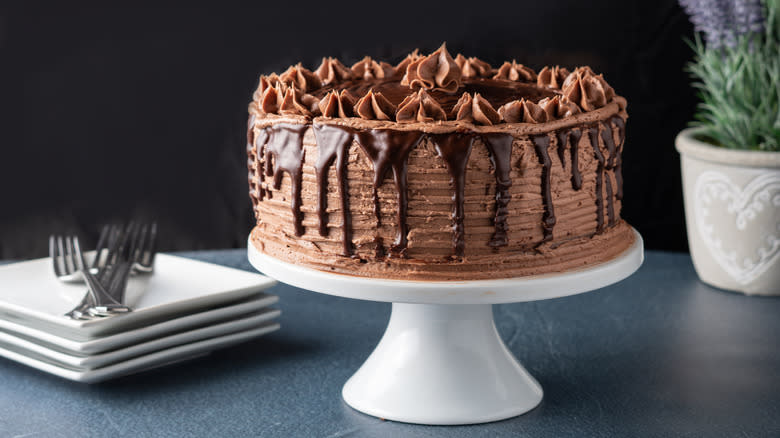
Frosting a cake can be messy business. That sticky goo is the stuff of dreams, but working with it can quickly whip you into a tizzy. Let's face it, frosting seems to get everywhere except on the cake, and even when it goes in the right spot, it's not necessarily amenable to being molded the way you want it.
Ina Garten's hack that will change the way you frost cake is as simple as enlisting the help of parchment paper. Start by cutting the sheets into right triangles and slipping the long side underneath the cake, leaving plenty of paper sticking out. Now it's time to pour on the frosting of your choice, allowing some of it to drip down the sides if it's the warm and gooey kind. Allow the frosting to set, if it hasn't already, then fix up any imperfections in the layout of the icing, and finally use a pairing knife to pry away the parchment paper. You'll be left with a nicely iced cake and a perfectly clean serving plate and no drippings in sight. Although Ina Garten provides this advice in connection to a ganache, which is more liquid than traditional frosting, feel free to use this method with buttercream as well.
Put Instant Coffee In Your Cookies
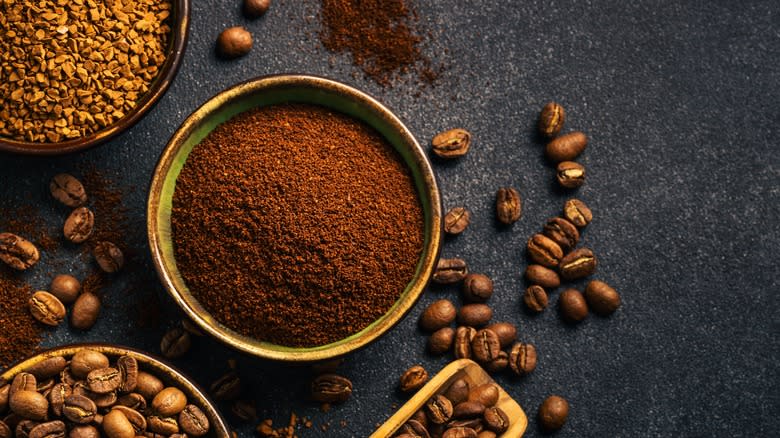
If you're a big coffee lover, instant coffee granules might not be something you frequently store in your pantry. You might even snub them completely, and if we were talking about making coffee here, we'd be inclined to agree. But we're not talking about coffee, we're talking about baking, and for this activity, those instant coffee granules might actually come in handy.
Ina Garten seems to agree because coffee is the pantry staple she uses for bakery-level chocolate-based cookies, whether you're baking a good ole batch of chocolate chip cookies or sumptuous, rich chocolate cookies. Garten does this not because she thinks every batch of coffee should taste like cookies, but because coffee brings out the flavor of the chocolate. In fact, if you put in the right amount, the coffee flavor won't come through at all. The trick is to put the granules in with the wet ingredients, so they're able to dissolve quickly. In fact, be sure to only use instant coffee for this hack. Non-instant varieties aren't able to dissolve as quickly without added water, so you might end up with some extra, unwanted bits in your final result.
Oven Bake Your Pancakes
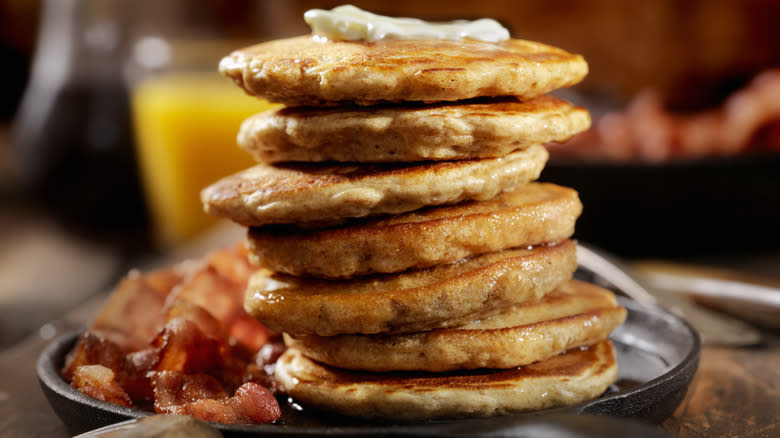
Pancakes are the quintessential breakfast food. They're fluffy, delicious, and relatively easy to make. But what if we told you there was an even easier way to prepare them? Ina Garten has the perfect trick for putting pancakes out of sight and out of mind until they're ready to be served. She puts them in the oven!
As you may imagine, Garten's oven-baked pancakes yield a slightly different result from what you're used to from the pan-fried version. But the outcome is no less delicious. Start by preparing your batter as you normally would, perhaps while following our easy pancake recipe. Meanwhile, preheat your oven with buttered baking dishes or skillets inside it. Once everything is hot enough, which is the key to making sure the pancakes rise properly, it's time to pour in the batter and cook briefly. Serve with your favorite toppings. Ina Garten uses macerated fruit, but you can opt for the classic maple syrup and butter or a few spoonfuls of Nutella.
Sprinkle Sugar Over Your Blueberry Muffins
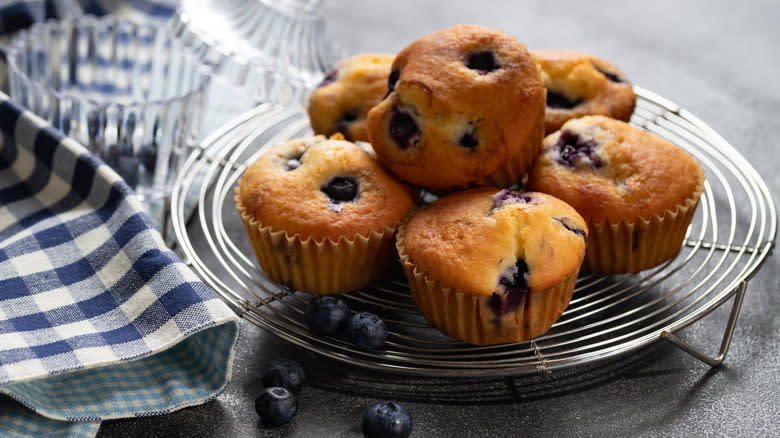
We can probably all agree that the best part of the muffin is the muffin top. The fact that it tends to be slightly crisp on the outside and fluffy in the middle makes it so much better than the bottom part, with its fluffy interior but slightly limp exterior. While all this sounds well and good, Ina Garten has a method for perfecting that outer crispiness on blueberry muffins without affecting the fluffiness on the inside.
Her trick is to sprinkle white sugar on the batter once it's been prepared and poured into the muffin tins. This gives the muffin tops a more delicate but even crunch, as muffins are normally topped with larger sugar crystals that provide more sporadic crunchiness. Try this move with our cardamom blueberry muffin recipe. Combine plain flour, ground cardamom, baking powder, and salt in one bowl, then mix together melted butter, brown sugar, and white sugar in a separate receptacle, along with eggs, vanilla extract, and Greek yogurt. Combine the contents of the two bowls along with the blueberries. Pour the batter into your prepared muffin tins then sprinkle that magical sugar on top. Bake for 5 minutes at 400 F, then for 15 minutes at 350 F.
Scoop Your Cookie Dough With An Ice Cream Scooper
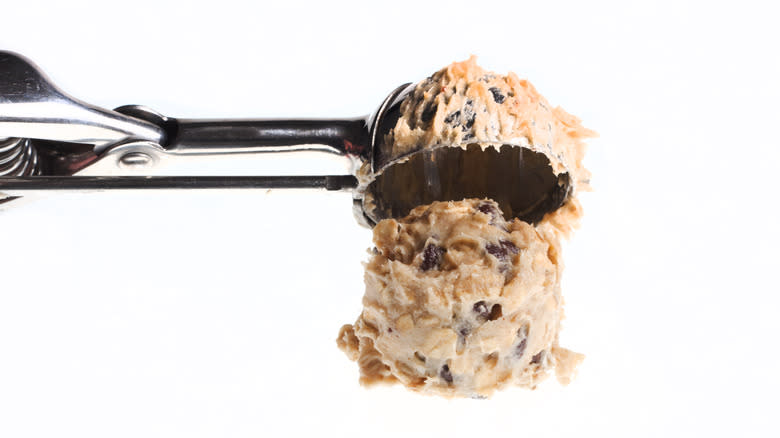
Buying an ice cream scooper might seem unnecessary when a big, sturdy spoon will do just as well. After all, who has the space and money for a single-use item, especially if you're the type to consume your ice cream straight out of the pint? But Ina Garten has another use for it. Turns out an ice cream scooper is the kitchen tool her pre-portioned cookie dough relies on.
According to our beloved Barefoot Contessa, the best way to ensure your cookies are all the same size is to use an average-sized ice cream tool with a sweeper bar to scoop up the dough and plop it onto the baking tray. Not only will the sizes be even, but the balls of dough will be the perfect proportion. In fact, the same trick can be used for many other items, including muffins, allowing all your batter to fall directly into the hole rather than on top of the pan.
Sift The Flour First
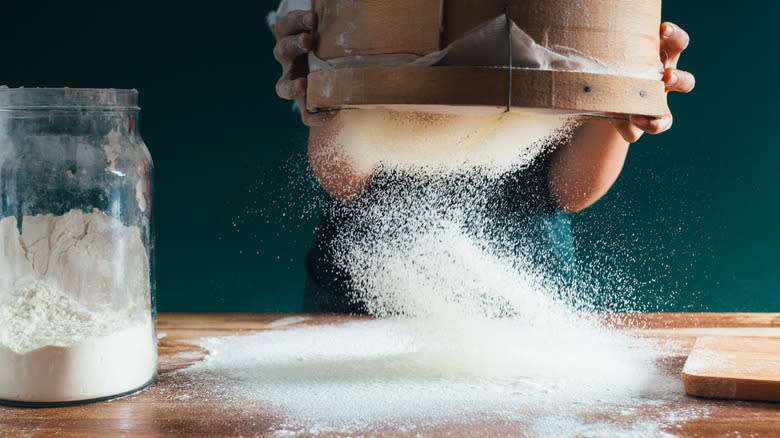
A lot of baking recipes call for the flour and other ingredients to be sifted, mostly in order to avoid clumps in your batter. But did you know that it's best to measure the flour after it's been sifted, and not before? Ina Garten knows, which is why she's made a point to advise us poor souls to remember this every time we set out to bake a pie or anything else.
Measuring your flour before sifting could mess up your measurements slightly, and therefore your overall proportions, which are incredibly important in baking. This is because any clumps that are in the original mix might be gone once everything is sifted properly, making the end result slightly lighter in weight. But this principle also applies to measurements taken with cups instead of scales. Any clumps of flour could easily trap little pockets of air in your cup, making it look full when in fact it is not.
It's Okay To Use Store-Bought Pie Crusts
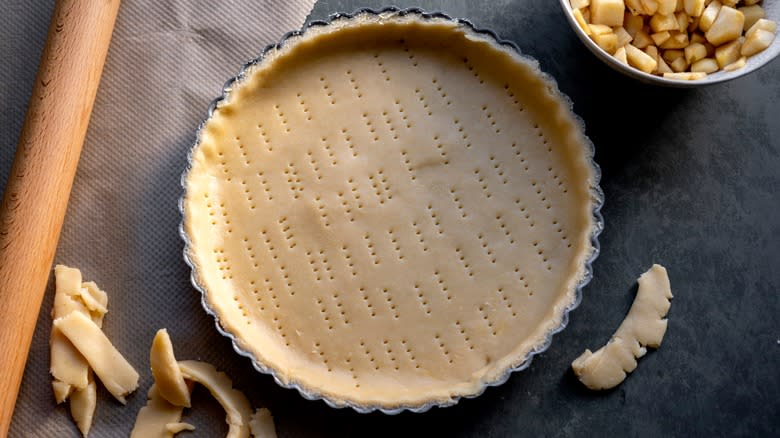
Ina Garten has made no secret of the fact that she uses store-bought ingredients in her home and on her show, including when making pies, as long as they're of good quality. This happens to include store-bought pie crusts, which can be a lifesaver when you're short on time. This is especially true when you're making a pie with a delicious filling, which should be the star of the show, with the crust simply providing support.
That's not to say that you can't also make your own pie crust if you're inclined to do so. And for that, we can point you in the right direction with our flaky pie crust recipe. Start by whisking together the flour, sugar, and salt before adding cold butter in cubes. Work it into the flour mixture with your hands, then mix continuously as you add water and a touch of cold vodka, which helps keep the dough tender. Chill the resulting dough for at least an hour before using it.
Pay Close Attention When Doubling Recipes
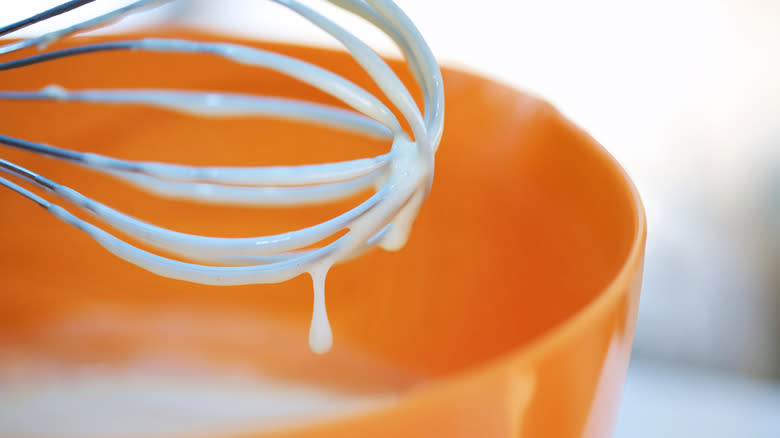
Doubling baking recipes isn't like doubling a savory recipe, where in most cases, all you have to do is a bit of math. Since baking is all about chemistry, more so than cooking, adding twice the amount for each ingredient can change the chemistry, and therefore outcome of a recipe. This is why Ina Garten follows a careful trial and error process whenever she doubles a recipe.
Whenever she needs to double a recipe for cookies, muffins, or bread, for example, which tend to come out differently than a single yield because of the way the leavening behaves, she doubles the recipe, observes the result, and then adjusts the ingredients accordingly in her next batch. Although this requires some knowledge of how ingredients behave, it really helps turn out the perfect batch when doubling a recipe. Just make sure you note down the ingredients you settle on or you'll have to start all over again next time!
Read the original article on Tasting Table.


